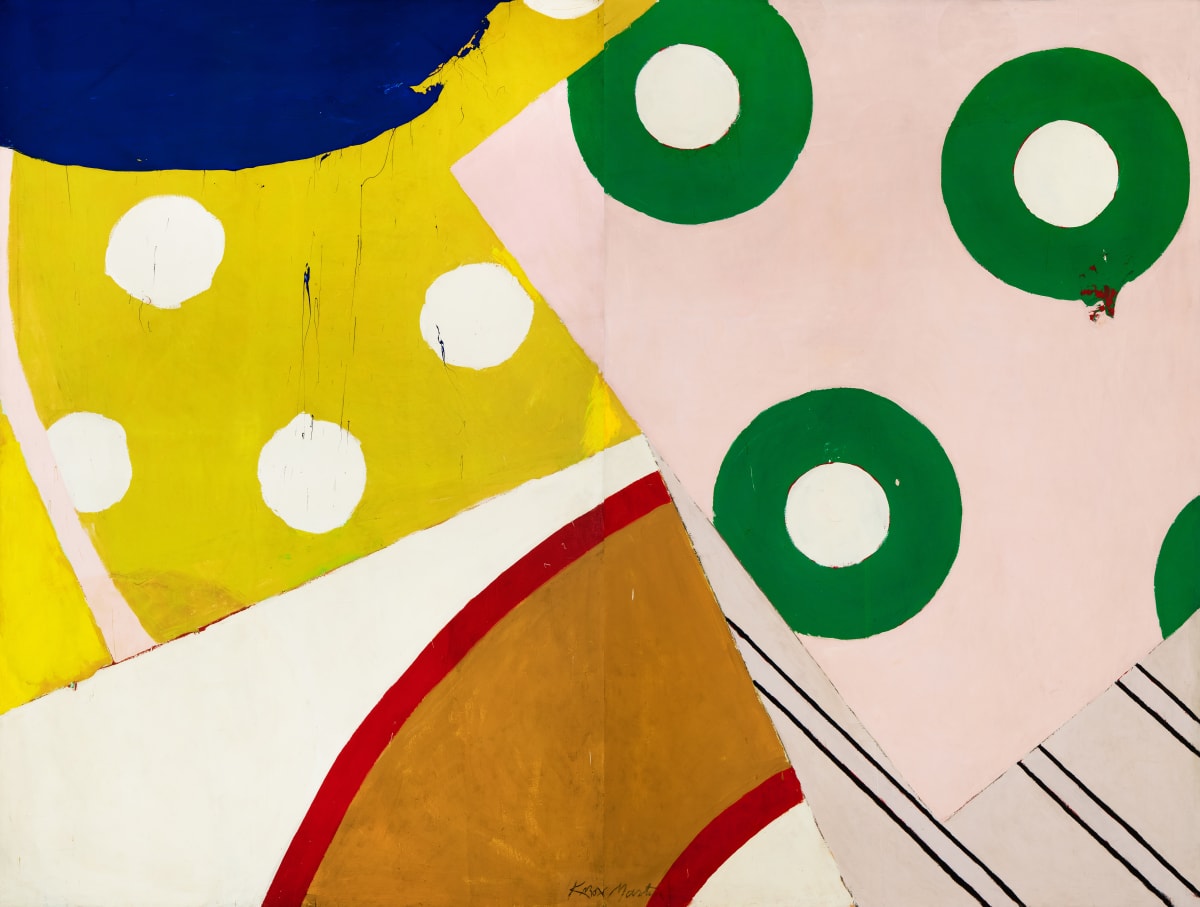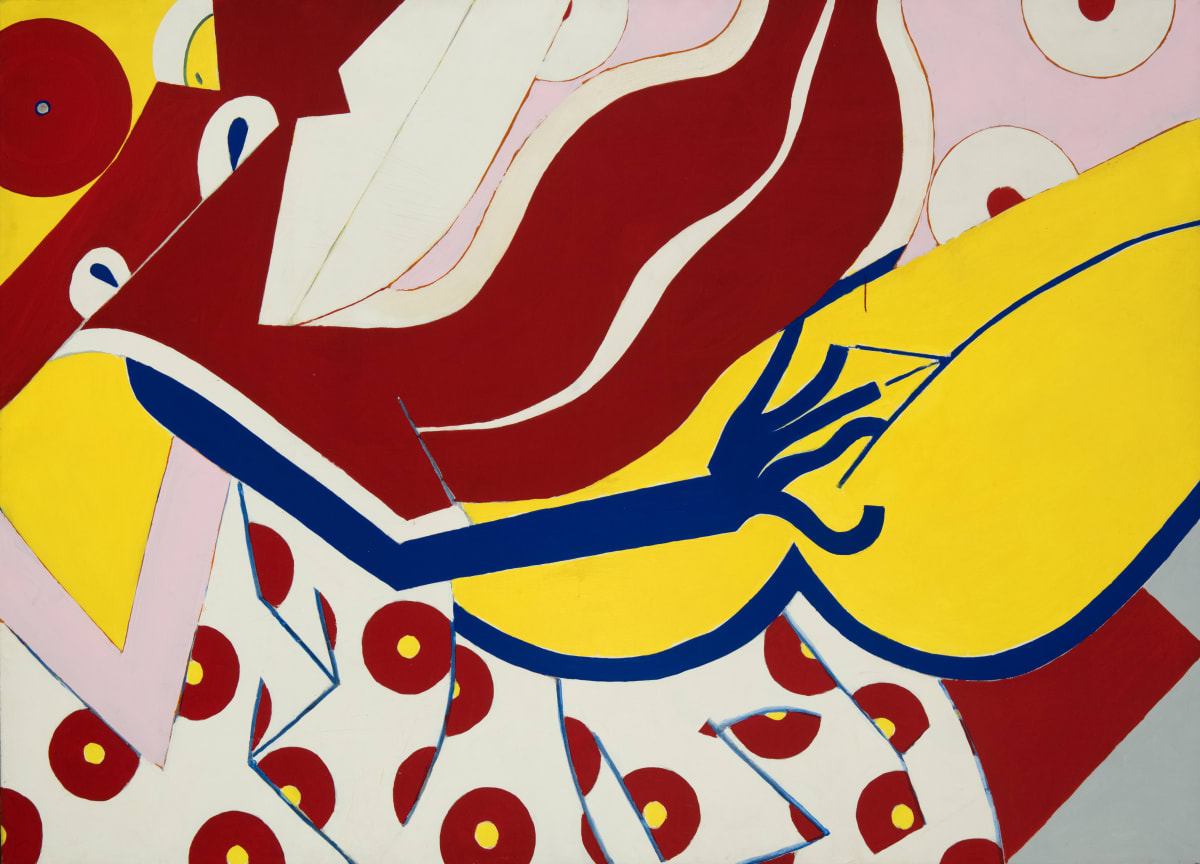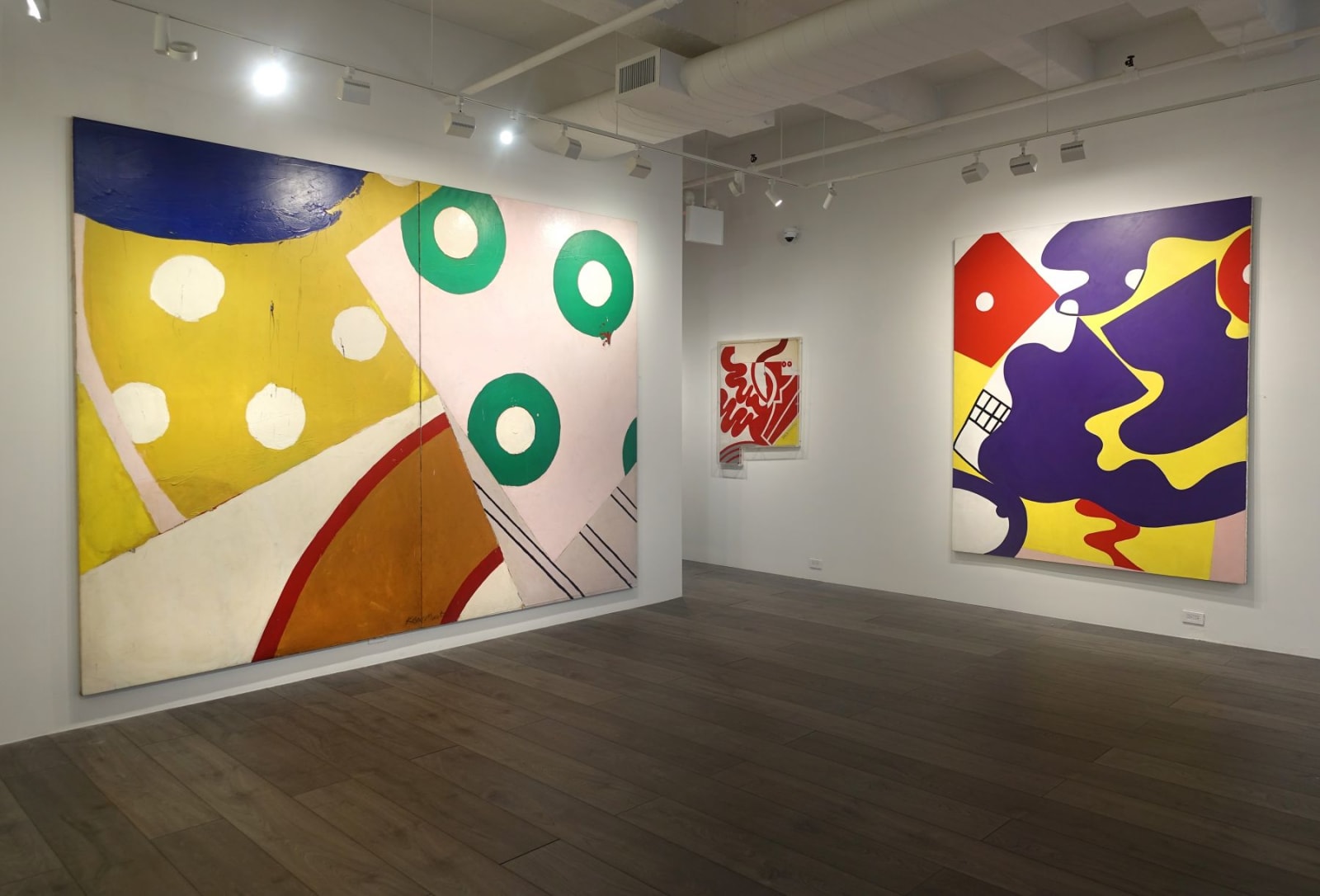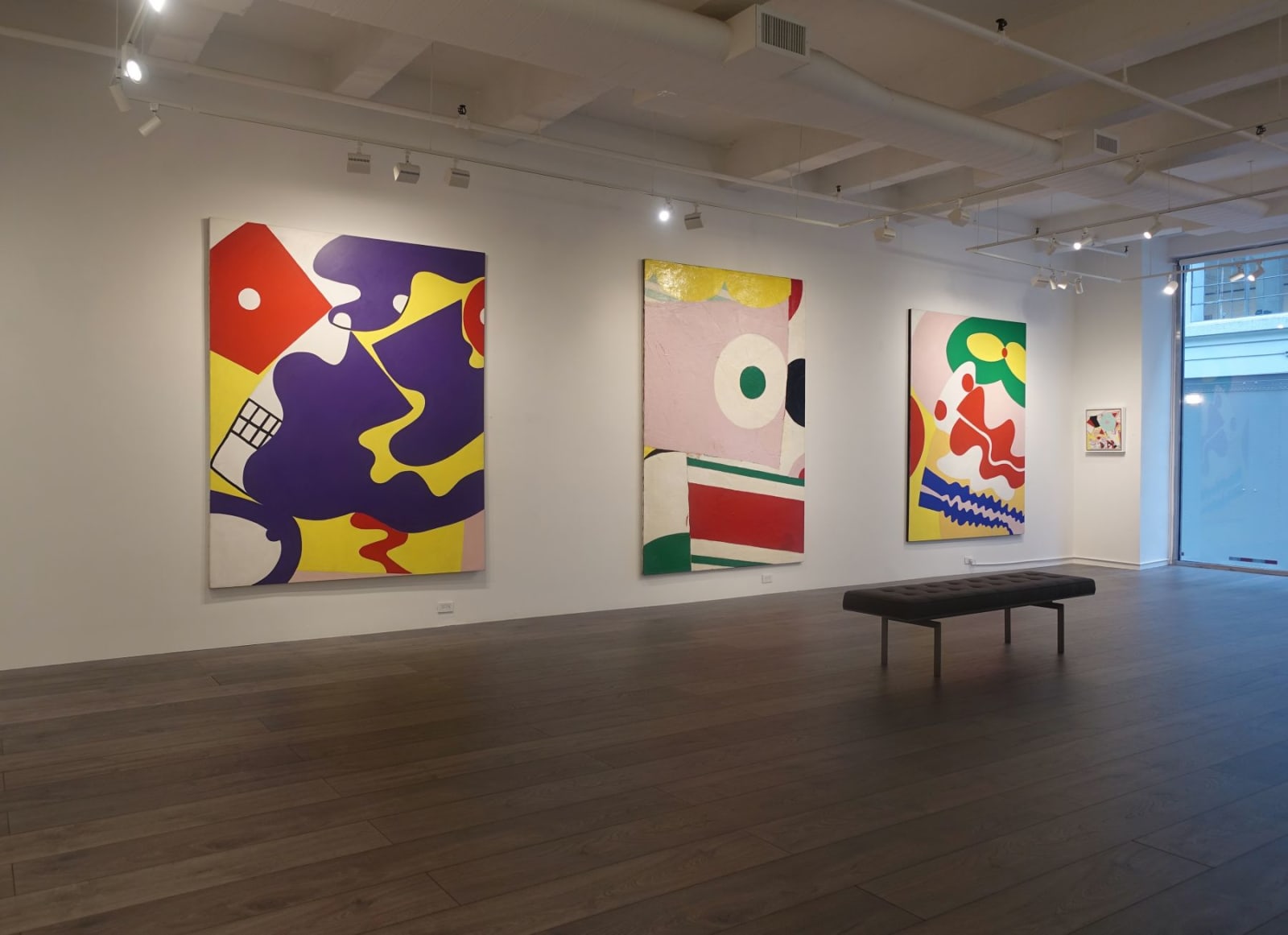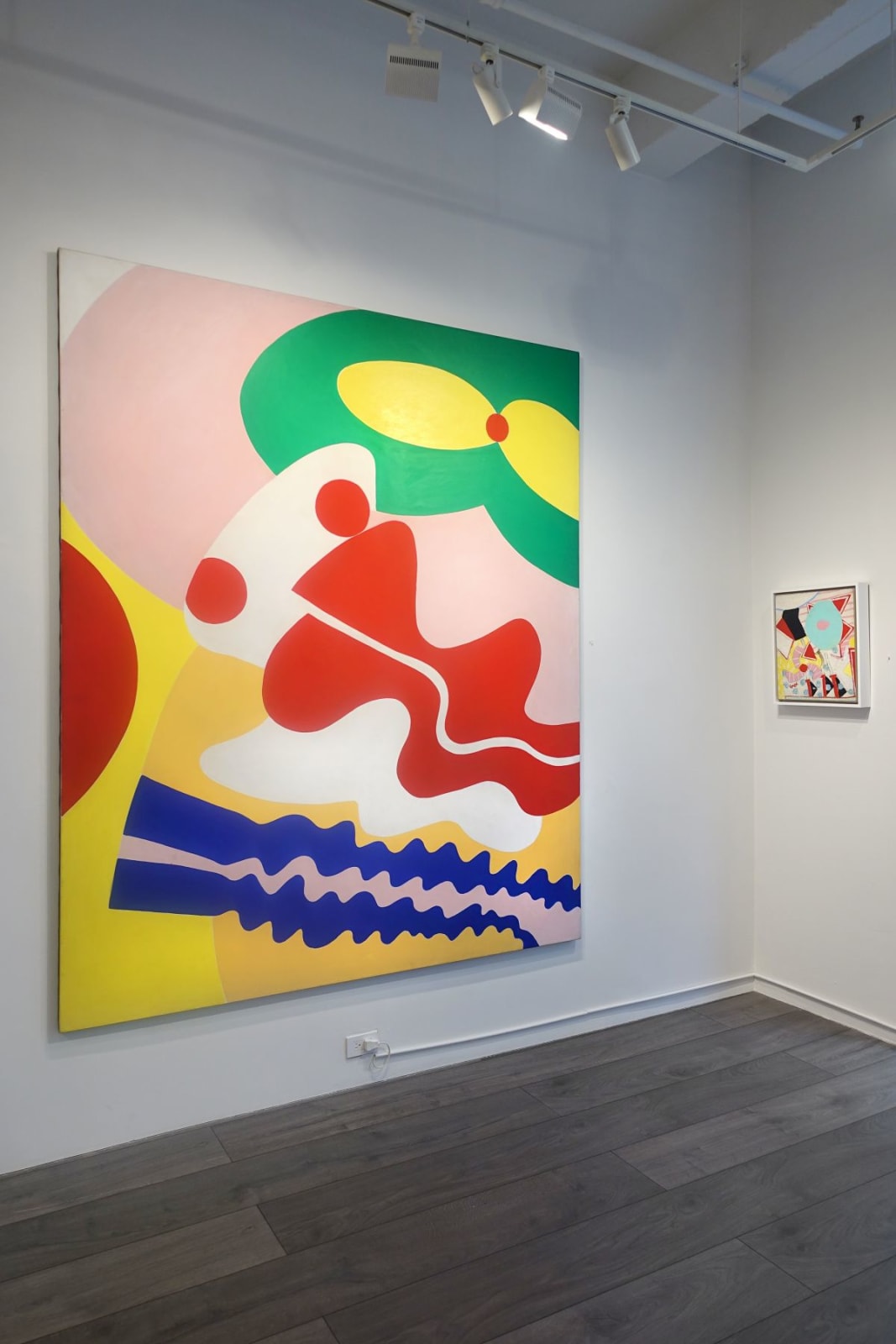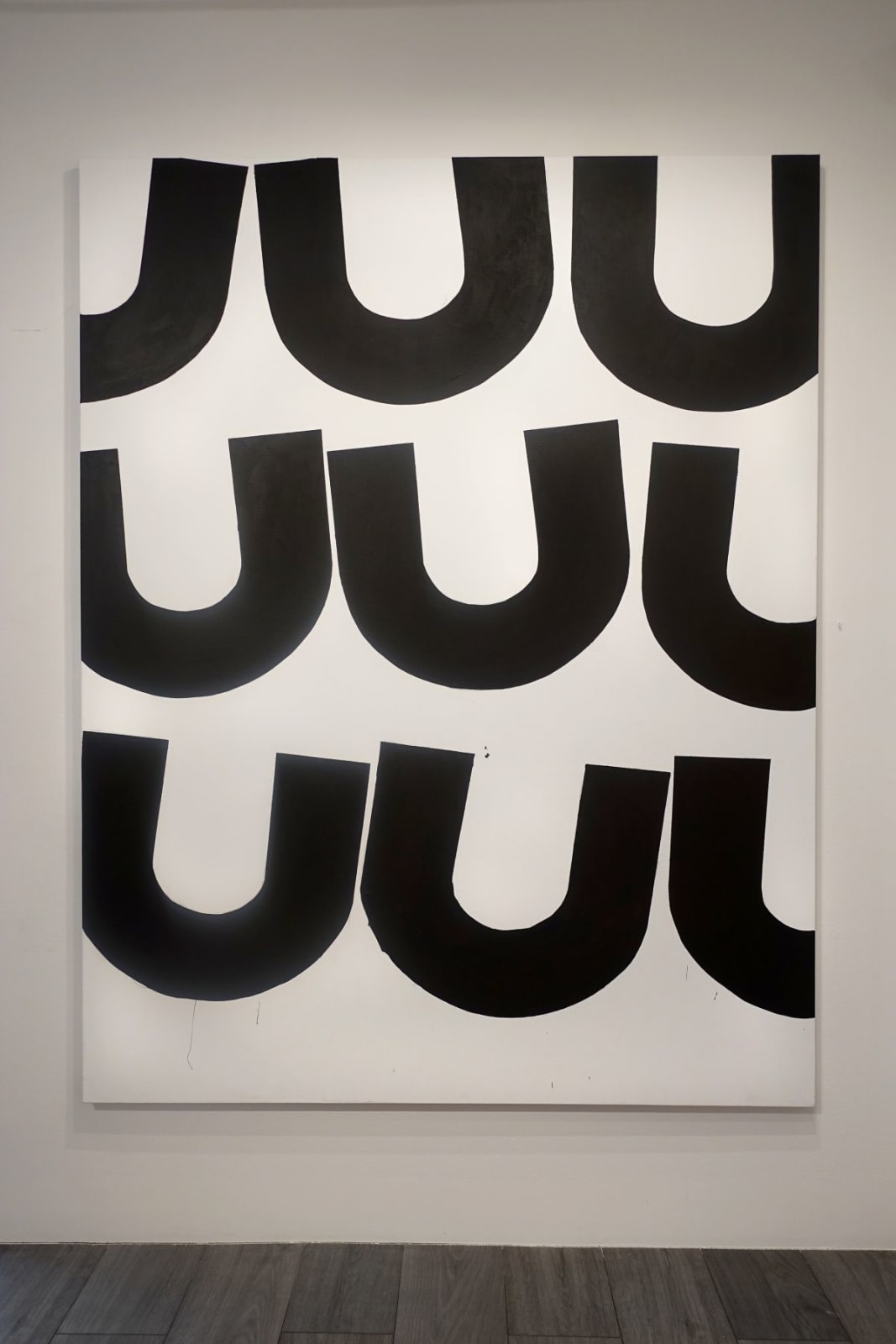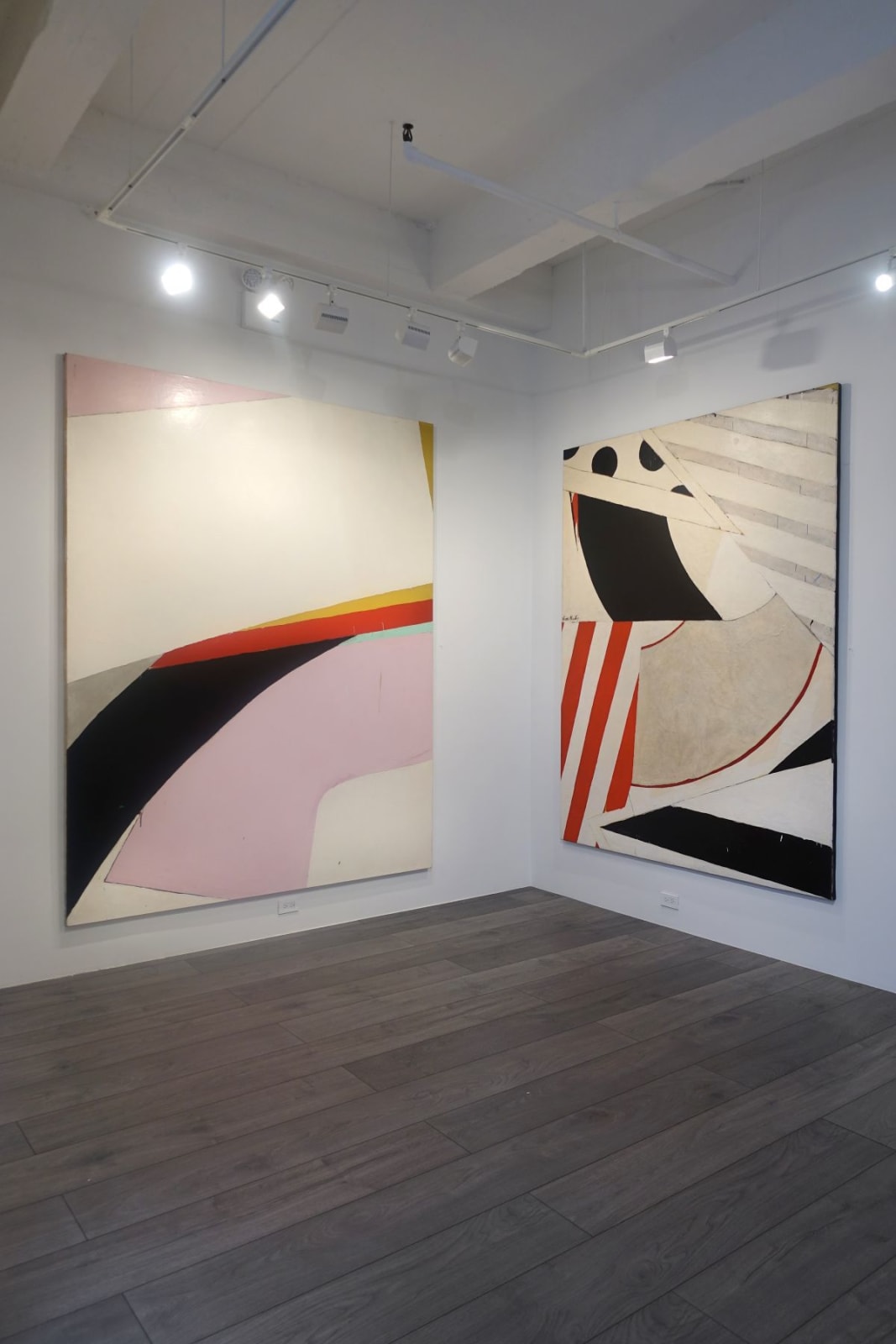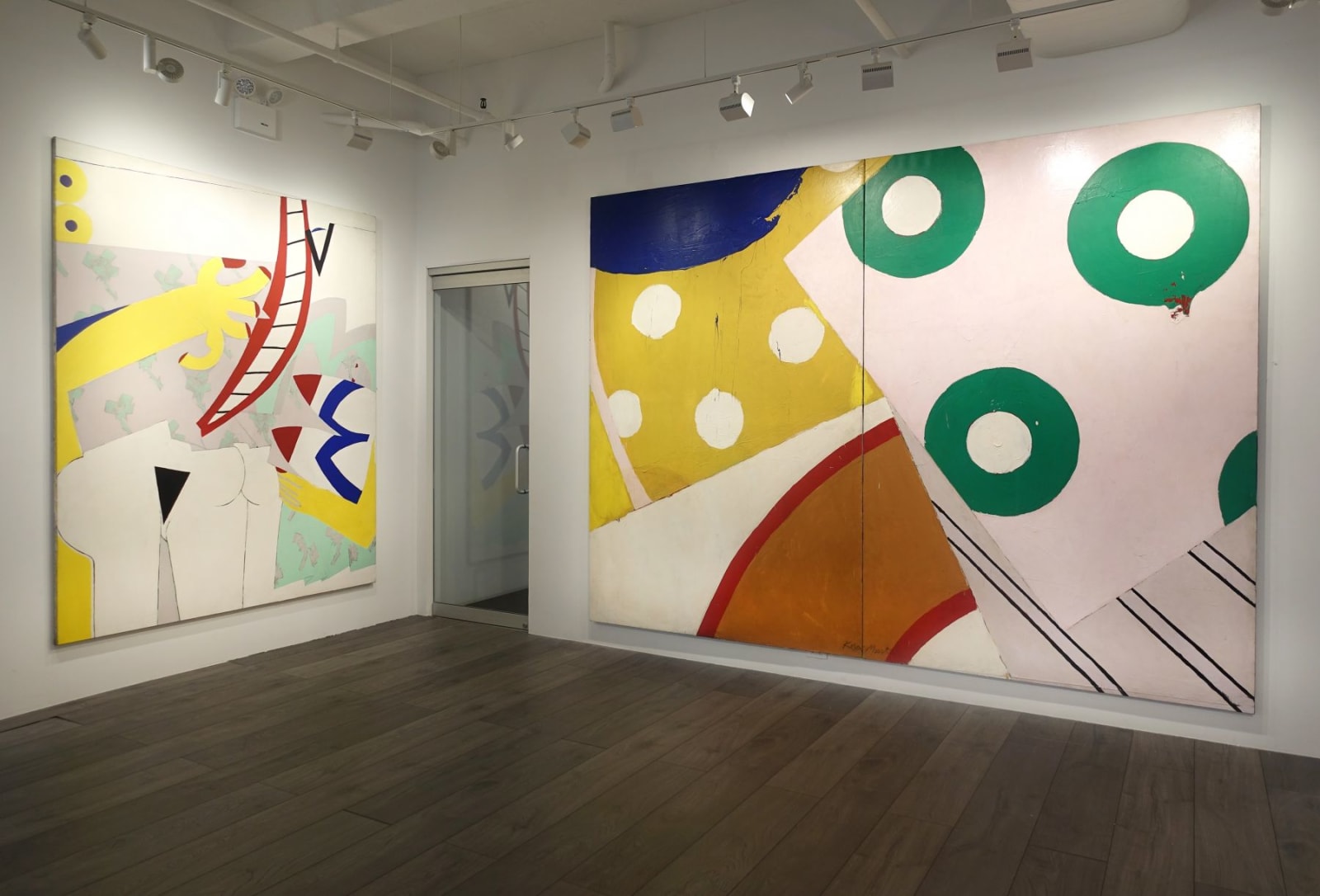
an in-depth exploration of the work of acclaimed artist Knox Martin
This May, Hollis Taggart will present an in-depth exploration of the work of acclaimed artist Knox Martin, with a solo presentation at Frieze New York and a concurrent solo exhibition at its primary location in Chelsea. Martin's practice, which spans nearly seven decades, has engaged with the conceptual and aesthetic underpinnings of a wide range of artistic movements, from Cubism to Abstract Expressionism to Pop Art. His use of bright swaths of color, precise, architectural lines, and organic forms that reference the female body have resulted in energetic and vibrant compositions that speak to a visual vocabulary that is entirely his own.
For the upcoming edition of Frieze New York, Hollis Taggart will present a focused selection of paintings, from the 1950s through the 1970s, providing an introduction to the artist's early works. To foster a broader understanding of Martin's practice, the gallery will also open Knox Martin: Radical Structures at its 521 W. 26th Street space on May 2, 2019. The exhibition at the gallery will emphasize in particular Martin's paintings from the 1960s and 1970s, and also include several later works, among which are two new paintings created by the 96-year-old artist in 2019. Knox Martin: Radical...
This May, Hollis Taggart will present an in-depth exploration of the work of acclaimed artist Knox Martin, with a solo presentation at Frieze New York and a concurrent solo exhibition at its primary location in Chelsea. Martin's practice, which spans nearly seven decades, has engaged with the conceptual and aesthetic underpinnings of a wide range of artistic movements, from Cubism to Abstract Expressionism to Pop Art. His use of bright swaths of color, precise, architectural lines, and organic forms that reference the female body have resulted in energetic and vibrant compositions that speak to a visual vocabulary that is entirely his own.
For the upcoming edition of Frieze New York, Hollis Taggart will present a focused selection of paintings, from the 1950s through the 1970s, providing an introduction to the artist's early works. To foster a broader understanding of Martin's practice, the gallery will also open Knox Martin: Radical Structures at its 521 W. 26th Street space on May 2, 2019. The exhibition at the gallery will emphasize in particular Martin's paintings from the 1960s and 1970s, and also include several later works, among which are two new paintings created by the 96-year-old artist in 2019. Knox Martin: Radical Structures will be on view through May 27, 2019.
After serving in WWII, Martin enrolled in the Art Students League of New York, where he studied from 1946 to 1950, alongside Robert Rauschenberg, Cy Twombly, and Al Held, and later became an instructor. Despite the popularity of Abstract Expressionism, Martin's early work of the 1950s challenged the stylistic drippings and splatters of his contemporaries, and began the singular exploration of figures and objects that would become a fundamental part of his oeuvre. His vision earned him his first solo exhibition at the influential Charles Egan Gallery in 1954, and established him as a recognized member of New York's inner art and social circles of the time. A mentor and contemporary to many well-recognized artists, Rauschenberg once said of Martin, "You are my mentor. For years I have always asked, what would Knox think of my paintings?"
Influenced by the work of Cezanne, Goya, Matisse, Picasso, and Willem de Kooning, Martin's early paintings were textural explorations, rendered predominantly in black and white and through the use of bold brushstrokes and geometric lines-as seen in Susanna and the Elders (1953). In an early review, The New York Times categorized this work as containing a "particular intensity, both visceral and sensational." In the 1960s and 1970s, Martin began a thematic and aesthetic evolution, best exemplified through his newfound use of color and a growing interest in the female form, which he juxtaposed with geometric patterns and other organic shapes. As seen in Razberri Breasts (c. 1970), Woman with Folded Hands (1973), Reclining Woman (1974), and Carmen Seated (1975), the female form is captured within the circular, rectangular, triangular, disked, and squared configurations of geometry. Clasped hands, crossed arms, bent knees, and faces appear within all four corners of the canvas, creating a sensation of the body being locked in a moment of stillness within the surface plane.
These geometric metaphors were exhibited in the 1972 Whitney Annual at the Whitney Museum of American Art, and in the Bonino, Ingber, Jack and I. Jankovsky galleries in New York between 1970 and 1978. With shades of blues, pinks, blacks, yellows, reds, greens, and whites, in combination with dots, flecks, arcs, ripples, and stripes, Martin was simultaneously able to create a sense of rhythm and stillness that exudes both playfulness and quietude. Art critic Arthur Danto said of Martin's paintings, "[they] were animated by certain internal conversations on the meaning of space, surface, painting, pigment, reference, reality and illusion."
It was also at this time that Martin began to receive public art commissions. This included several large-scale mural projects in New York City, including Venus (original: 1970; remastered: 1998) which can still be partially glimpsed at the corner of 19th Street and 11th Avenue. Experienced in grand scale, Martin's use of lines, curves, and colors becomes all the more distinctive and complex.
In his more recent works, Martin has returned to a focus on black and white. In one of his latest paintings, U (2019), Martin uses the sharp contrast of black against white to focus on abstract symbols, letters, and typography. It is the repetition of the letter "U", each character slightly tilted and unequal in scale, that creates a certain movement and vibration-a reinvention and exploration of form that is distinctly Martin's. There is a feeling of simplicity, but also of mathematical precision and complexity in Martin's new work. It is particularly the use of white space that is most striking, an absence that contains as much energy as the lettered forms themselves.
Martin describes the use of white in his paintings as essential, "everything that is art, white circulates around it. It is the small spaces in between that fluctuate and provide substance. Without white, there is nothing." He also emphasizes the intuitive and instinctive process that has shaped the abstract conception and vision of his career, "I never know where [the paintings] are going, they tell me what to do."
-
Born in Barranquilla, Colombia in 1923, Knox Martin moved to New York City in 1927. Since his first solo exhibition in 1954, solo exhibitions of Martin's work have been presented widely both in the US and abroad, including in France, England, Switzerland, Canada, Spain, and Germany. His work has also been included in significant group presentations, such as Some Paintings to Consider (Santa Barbara Museum of Art, California, 1964), Concrete Expressionism (New York University, New York, 1965), Large Scale American Paintings (Jewish Museum, New York, 1967), the Whitney Annual (Whitney Museum of American Art, New York, 1967 and 1972), Synthetic Realism (Gremillion & Co. Fine Art Inc., Houston, 1986), Knox Martin: A Painting Exhibition Spanning a Number of Years (Lighthouse Museum, Tequesta, Florida, 1999), Pan American Modernism: Avant-Garde Art in Latin America and the United States (Lowe Art Museum, Miami, 2013), and The Masters: Art Student League Teachers and their Students (The Art Students League of New York, 2018). Martin's work is held in over 40 museums and private collections worldwide. He has received prestigious grants and awards, including most recently the Benjamin West Clinedinst Memorial Award and the French Legion of Honor. Martin has also led a distinguished career in teaching art, including his years at Yale Graduate School of the Arts, New York University, University of Minnesota, and The Art Students League of New York.
For more information about Knox Martin: Radical Structures, please contact us at info@hollistaggart.com or 212.628.4000. For press inquiries, please contact Alina Sumajin or Sascha Freudenheim, PAVE Communications & Consulting at alina@paveconsult.com, 646.369.2050 or sascha@paveconsult.com, 917.544.6057.









